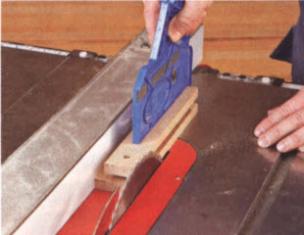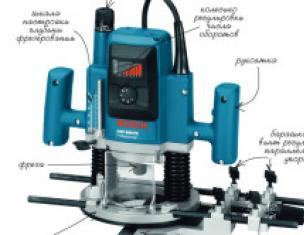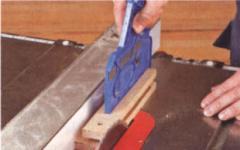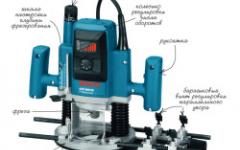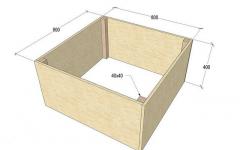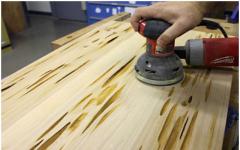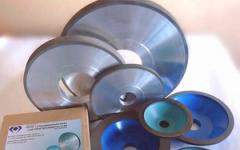The construction of any house begins with the design. For each person, it is important that the house is beautiful, warm, comfortable, practical and unusual in terms of architectural design. In most cases, the attractiveness and eccentricity of the house gives the roof.
But the roof, in the first place, is not a decoration, but protection from the impact. environment(UV radiation, snow, rain and wind). Therefore, when choosing the type and shape of the roof, it is necessary to pay attention to its functional features.

Types of roofs depending on the angle of inclination
flat roofs- these are roofs whose slope is 2.5-3% of the horizon level. IN low-rise construction this type of roof is rarely used, since stagnant water often forms on them, which leads to roof leakage. IN winter period snow accumulates on the roof, which must be removed in order to get rid of the excess load on the roof, as well as to avoid leaks. But, despite the shortcomings, this type of roof has one significant advantage - low cost. Also, this roof can be used as an additional area for recreation or sports, if it is properly equipped.
pitched roofs- these are roofs that have an angle of inclination of 10% or more from the horizon. This is one of the most practical types of roofs in operation. This roof does not allow precipitation to accumulate, as the slopes serve as a drainage system. As a rule, this type of roofing is used in the construction of private houses. Pitched roofs have various shapes, on which their features depend.
Roof types and their shapes
Shed roofs- these are roofs that consist of one slope. The slope of the roof is formed due to the truss system, which rests on the wall at different heights. This roof is easy to install. As building materials for one pitched roofs use slate, tile, ondulin or metal tile. The convenience of using such roofs lies in the fact that precipitation is not collected on it. The disadvantage is the inability to organize an attic space, so they are used in the construction of garages, terraces and verandas.
 gable roofs- these are roofs with two slopes, which rest at the same height on two walls. Between the slopes, a space is formed that can be used as an attic space. This is the most common and convenient type of roof. Thanks to the slopes on the roof, precipitation does not accumulate. This type of roof is not very difficult to install, and the variety of shapes and designs is much greater than other types of roofs.
gable roofs- these are roofs with two slopes, which rest at the same height on two walls. Between the slopes, a space is formed that can be used as an attic space. This is the most common and convenient type of roof. Thanks to the slopes on the roof, precipitation does not accumulate. This type of roof is not very difficult to install, and the variety of shapes and designs is much greater than other types of roofs.
 Mansard roofs- these are roofs that have two slopes with broken lines. It is this type of roof that allows you to organize a large attic space for various purposes, for example, for an additional room. The roof of this type has a pentagonal shape. The installation of the roof is not difficult, but at a price it will be more expensive than the rest, due to insulation.
Mansard roofs- these are roofs that have two slopes with broken lines. It is this type of roof that allows you to organize a large attic space for various purposes, for example, for an additional room. The roof of this type has a pentagonal shape. The installation of the roof is not difficult, but at a price it will be more expensive than the rest, due to insulation.
 hip roofs- these are roofs that have four slopes. Two triangular-shaped slopes and two trapezoid-shaped slopes. Triangular slopes are located from the front of the wall. This is a rather complex type of roof, requiring significant costs and effort during installation. They require beams and double tightening when installed, and it is also necessary to equip the slopes with drains, the angle of which is 45º, to ensure the slope of water and snow.
hip roofs- these are roofs that have four slopes. Two triangular-shaped slopes and two trapezoid-shaped slopes. Triangular slopes are located from the front of the wall. This is a rather complex type of roof, requiring significant costs and effort during installation. They require beams and double tightening when installed, and it is also necessary to equip the slopes with drains, the angle of which is 45º, to ensure the slope of water and snow.
 Half hip roofs- these are roofs that have the shape of a truncated triangle, which is located above the trapezoidal slopes. This type of roof is convenient in areas with strong winds. The main disadvantage of such roofs is the high installation cost, since additional building materials are needed to cover the areas that are adjacent to the sloping roof ribs.
Half hip roofs- these are roofs that have the shape of a truncated triangle, which is located above the trapezoidal slopes. This type of roof is convenient in areas with strong winds. The main disadvantage of such roofs is the high installation cost, since additional building materials are needed to cover the areas that are adjacent to the sloping roof ribs.
 hipped roofs- This is a type of hip roof with four or more triangular slopes. This type of roof is most often used in the construction of equilateral or square houses. The difficulty of installing the roof lies in the use of the truss system.
hipped roofs- This is a type of hip roof with four or more triangular slopes. This type of roof is most often used in the construction of equilateral or square houses. The difficulty of installing the roof lies in the use of the truss system.
 Multi-gable roofs- These are roofs that have a complex structure. During its arrangement, many internal corners and external ribs are formed, so it can only be installed by specialists who correctly calculate all dimensions so that no leaks form during its operation. This type of roof is convenient in the construction of a house in which there are many outbuildings and side attics.
Multi-gable roofs- These are roofs that have a complex structure. During its arrangement, many internal corners and external ribs are formed, so it can only be installed by specialists who correctly calculate all dimensions so that no leaks form during its operation. This type of roof is convenient in the construction of a house in which there are many outbuildings and side attics.
 dome roofs- these are roofs that have curved frame elements. This type of roof can completely or partially block the house. Soft materials are chosen as building materials for such roofs: roofing material, glass insulation or bituminous tiles. Today, such roofs are popular because they give the house originality and antiquity.
dome roofs- these are roofs that have curved frame elements. This type of roof can completely or partially block the house. Soft materials are chosen as building materials for such roofs: roofing material, glass insulation or bituminous tiles. Today, such roofs are popular because they give the house originality and antiquity.
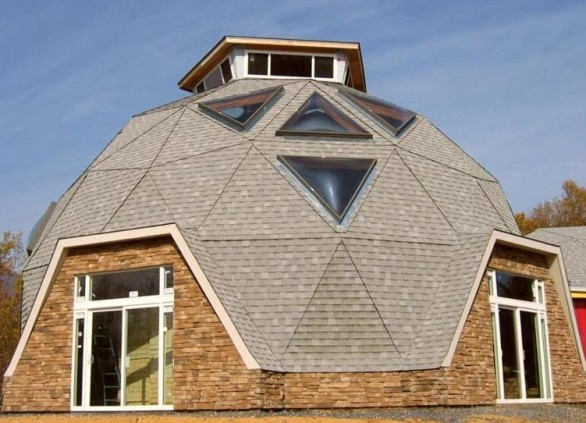 Types of roof structures
Types of roof structures
Types of roof structures are divided into two categories:
- roofless roofs- these are roofs that are combined with the main room. In turn, such roofs are divided according to the method of installation: non-ventilated, partially ventilated and ventilated.
- attic roofs- these are roofs separated from the main room, they can be insulated or not, depending on the use of the bottom space.
There are a lot of varieties of house roofs, so choosing a roof for your house, you can develop a project that will allow your house to be not only cozy, reliable and warm, but also creative, unusual and interesting.
On modern market building materials types of roofing presented in a fairly wide range, so before buying roofing materials, it is recommended, if possible, to study the advantages and disadvantages of each type of roofing.
Options for choosing roofing material.
. In addition to precipitation standards, it is also necessary to take into account the weight of the roof (together with the truss system) and wind loads. To start choosing the type of roof, you need to find out the maximum standards, as well as the weight of the entire roof.2. The durability of the future roof. It is also necessary to take into account such a factor as the fire resistance of the material. The main thing is to rationally approach the choice and purchase roofing material, because it is stupid to buy the most expensive material for some technical room or a barn, but to cover the roof of a house, you should not skimp on high-quality roofing materials.
3. architectural solution roofing. This parameter depends on the material itself (color, texture, shape), however, not every roof will easily fall on the roof. There are standards for some types of roofs (for example, the percentage of slope), which determine whether or not the selected material is acceptable to cover the roof.
Roof warranty periods are installed by manufacturers on the roof, but only if all the rules of transportation, installation and operation are observed. But many types of roofing can serve much longer than the warranty period:
Metal tile - a guarantee of 5-15 years (actually 30-50 years),
Soft tiles - 15-20 years (30-50 years),
Bituminous corrugated sheets - 15 years (15-25 years),
Slate (asbestos cement) - 10 years (30-40 years),
Natural tiles - 20-30 years (100-150 years),
Slate roof - 30-40 years (150-200 years),
Roofing steel, seam roofing and corrugated board - 15-20 years (up to 50 years).
Types of roofing, their advantages and disadvantages.
Ceramic tiles- is a clay mass molded after firing, which has a red-brown color and a small size of plates (30 × 30 cm), each plate weighs about 2 kg. There is a ceramic tile: flat and slotted tape, ordinary, slotted stamped, one-wave and two-wave.
The standard fastening of this is used within the slope from 22 to 60 degrees, if it is higher, then additional fastenings are required, and if lower, then ventilation and waterproofing must be improved.

Advantages of a roof ceramic tiles : sound insulation; during operation, the minimum amount of cleaning (gutters, valleys); variety of decor (colors, shapes); not subject to corrosion, combustion, good frost resistance; moisture under the roof evaporates perfectly, due to the porosity of the material.
Disadvantages: fragility; huge weight, which will require a strong truss system with a small and frequent step of elements; when constructing complex roofs, it requires additional fastenings and waterproofing.
Cement-sand tiles- an alternative to the previous type of roof, while it looks no different from it. It happens flat and convex type, the working slope is also in the range from 20 to 60 degrees. Over the years of operation, it only gains strength and does not lose its properties, which is a huge plus. Also from the advantages of cement-sand tiles can be distinguished: frost resistance up to 1000 cycles; resistance to aggressive environment and radiation, including.
Disadvantages: the massiveness of the material (thickness from 1 cm) and destruction are possible during transportation (especially if it is not correct).

Bituminous tiles as a roofing material- this is a composition of bituminous tiles, coated with cellulose, fiberglass and special paint. The tile perfectly joins with adjacent sheets, creating a good waterproofing, thanks to the bitumen-rubber layer. It has excellent ductility, you can bend it with your hands (this is especially useful when covered complex types of roofing). The choice of a slope from 12 degrees to a maximum.

Advantages: suitable for any slopes and roof shapes; not subject to scrap, rotting and corrosion; soundproofing.
Disadvantages: installation cannot be carried out in winter; has a high flammability; exposed to ultraviolet rays (fades in the sun).
Metal roofing material- is a polymer-coated, galvanized steel sheet. Because of the texture, it seems from afar that it consists of many separate "tiles", although this is a whole sheet of half a millimeter. Sheets can be cut to suitable lengths, depending on the dimensions of each part of the roof. Starting from 15 degrees, suitable for any slopes, but up to 20 degrees, it is desirable to improve the sealing of the joints.

Advantages: good mechanical stability; light and cheap; high installation speed; perfectly tolerates any transportation, but you just need to make sure that the sheets do not ride on top of each other, otherwise scratches may appear.
Disadvantages: a lot of waste during installation and poor sound insulation.
Slate (asbestos-cement sheets) as a roofing material- is a mixture of 15% asbestos and 85% Portland cement. Standard sizes corrugated slate sheet: 1.2 × 0.7 m, wave height is almost 3 mm. Sheets are fastened with nails, and rubber gaskets are placed under the hats (slate is easily destroyed by a hammer blow). It is advisable to make waterproofing from roofing felt or similar material before installing the slate.
IN Lately slate is used only in the construction of sheds, utility blocks or a fence, this is due to the lack of decorative appeal.

Pros: cuts well and is relatively cheap.
Disadvantages: harmful to humans; fragility; dries for a long time, which contributes to the reproduction of moss and fungus, unattractive as house roof types.
Decking as a roofing material- made of hot-dip galvanized steel, which is then corrugated or profiled to increase rigidity. This is the simplest type of roofing. This material is used on any slope from 10 degrees to the maximum value. Profiled flooring is used, as well as slate for covering sheds or utility rooms.

Advantages: high bending strength; durability; installation speed; cheapness.
Cons: Poor soundproofing.
Steel seam roof as a roofing material- is a sheet of smooth steel. An acceptable slope for this type of roof starts from 20 degrees to a maximum. It has the following mounting technology: sheets are attached to each other with the help of hooks with an adjacent sheet, and the resulting seam between the sheets is called a fold. Roof coverings of this type can be seen on temples, old manors, churches or industrial buildings.

Advantages: it is possible to make installation in the winter; not subject to combustion; The flexibility of the material allows this type of roof to adapt to any roof shape.
Disadvantages: additional insulation is needed and it has poor impact strength (there is a possibility of a dent).
Copper and aluminum seam roofing- roof types that are beautiful, durable, and, as a result, quite expensive materials. But their price is justified, even at a negative temperature, copper remains ductile. In addition, under the influence of atmospheric precipitation and carbon dioxide, copper eventually becomes covered with a patina (a brown-green film that protects the material from mechanical damage, ultraviolet radiation and corrosion). Also protective film covered with aluminum.

Advantages: environmentally friendly materials that are not subject to corrosion, burning and acid rain.
Disadvantages: only one - the high cost of materials.
Bituminous slate as a type of roofing material- consists of cellulose fibers that are impregnated with bitumen and treated with additives, pigments and resins, not only to increase flexibility, but also to maintain strength. Such roofing material can cover the roof from a slope of 5 degrees to a maximum, however, it is necessary to overlap the sheets in 2 waves, with a minimum slope.

Advantages: plasticity of the material on complex roofs facilitates installation; the material is light, it is lighter than metal tiles and ordinary slate.
Disadvantages: prone to burning; fade and fade; has low frost resistance (25 cycles).
slate roof- is considered an elite roofing material, the name of which suggests that it is plastic and flexible, like rubber slates on the legs. However, it is also quite a heavy roofing material, weight 1 square meter of this material is 25 kg.

Roofs from natural materials- these types of roofing are predominantly used on commercial buildings to create an unusual appearance grab the attention of customers. These can be premises such as bars, hotels, restaurants and similar facilities. To cover the roof of these buildings, wood, reeds or straw are used as a type of roofing material.

The roof of the house protects Vacation home from precipitation. In addition, it maintains the necessary thermal conditions.
Almost all types of roofs are also responsible for decorative functions. Architecture gives all roofs a very important meaning. Often, a non-standard roof adorns the most ordinary country house. But still, the main function of the roof is protection. Therefore, all canopies must comply with established norms and standards. Our article will tell you about all the requirements. Now I would like to talk about terminology.
The roof is the part of a building that sits on top of its base. She protects interior spaces from moisture penetration, wind and solar radiation. The roof is complex architectural element. It includes load-bearing structures ( truss system), responsible for the distribution of the load of the roof and precipitation. It is also an integral part of the roof, which protects the country house from winds, cold and moisture.
The roof is a multilayer "pie". It consists of:
- roofing;
- waterproofing layer;
- thermal insulation (one or more layers);
- vapor barrier material.
The roof is the part of the roof that can be seen from the outside. It is the roof that not only protects the building itself, but also determines its entire architectural and decorative appearance.

But not only roofing affects the roof of the house. Important importance is given to the type of roof - the defining element for the entire building. Today you can find a variety of classic and unusual roofs. This allows you to choose the most suitable option and make a house with a unique design.
Types of roofs of houses:
- Flat roofs are the simplest type with a slope of only 3%. They are used in construction apartment buildings and other massive structures. Private houses rarely contain this type of roof, as there is almost no design value. In addition, flat roofs accumulate snow masses, and this, in turn, leads to an increase in the strength requirements of the roof and load-bearing structures;
- Pitched roofs - have a slope angle of 10 degrees or more. Ideal for building a private house.

Benefits of pitched roofs:
- self-purification from various kinds precipitation;
- allow you to equip an attic or attic room;
- the possibility of applying design and architectural ideas.
Types of roofing roofs

This is far from full list pitched roofs.
Caution: When designing pitched roofs, provide a major system for draining water and snow from the roof surface.
Today you can find a range of roofing materials. For example, classic slate is popular. It is used for building roofs. outbuildings. Modern materials are represented by metal or composite tiles. Often you can find a plastic roof. Thanks to modern materials, you can equip both reliable and aesthetic plastic tiles. At the same time, the choice of colors is very large.

Various materials are used as roof waterproofing, ranging from roofing material to liquid rubber. The roofing material is represented by bitumen for the roof, which is applied to the fabric base. In this regard, roofing felt is a fairly versatile material. It is used as a material for flat roofs of warehouses, hangars and residential buildings. Note that initially the roofing felt resembled sheets of cardboard 1x1 meter. One side was free, and the other was covered with bitumen.
Of course, such a cardboard roofing material served for a rather limited period. However, it was indispensable if it was necessary to cover the roof in a short time. Today, roofing materials include fiberglass. This allows the material to be used for 20 years without loss of quality. Before laying roofing felt, you need to prepare the surface. It is important to make the surface of the roof as flat as possible.
Typical roof units and rafter fastening
The rafter frame is the basis for the roofing pie.
pitched roof has relatively large area. It is even compared to a sail. And this is not accidental - after all, a strong wind can easily rip it off or move it some distance.

In both cases, the roof will be damaged. And this is already an extra headache for the owner. country house. Under these conditions, reliable fastening of the roof to the walls will make it stable and durable.
- Rafter legs are installed on a beam (Mauerlat). It, in turn, is attached to the walls of the structure. To create a Mauerlat, you will need a 15x15 cm timber or a 15x10 cm board.
- Mauerlat is attached to the walls. For this, they are used anchor bolts or bolts pre-screwed into the walls. For greater reliability, you can tie the beam with burnt fittings. Also, the Mauerlat beam is usually associated with adjacent beams.
The result is a strong foundation for the rafter frame and roof. The task of strapping includes the competent redistribution of the load on the walls of the building.
Gable roof - device, detailed video:
Thunderstorm protection
When designing and building a roof, remember that the ridge is the highest point of the building. Under these conditions, you cannot do without lightning protection. Especially if it's a metal roof.
As practice shows, even a small lightning strike on the roof of a building leads to a fire. Moreover, if in the attic or in attic there are people, they can also be injured. Help prevent accidents important process- grounding of the roof.
Tip: Steel pins act as protection against thunderstorms. Their diameter must exceed 8 mm. The pins are attached along all edges of the roof horse and on the pipes. In height, the pins must be at least 1 meter above the roof level. In this case, the distance between them ideally should not exceed 12 meters.

- The bottom ends of the pins usually contain a wire that should be welded to them. The diameter of the wire must match the diameter of the down conductor. Special clamps are used to fasten the down conductor. The element is attached to the roof and walls of the structure. It is recommended to fix it on the basis of the downpipe.
- After fixing and lowering the down conductor to the ground, it is necessary to fix it on a flat surface. To do this, a distance of 1 meter is measured from each wall of the building.
- Further, a hole half a meter deep is dug, where three steel pipes are immersed. It is recommended to connect them with a pre-welded steel strip.
Pipes act as ground conductors. But they will not perform their functions without a down conductor. Bolts are required to fasten the element. The process of welding the down conductor to the surface of the pipes will not be superfluous. Such a grounding scheme will create high-quality protection against thunderstorms. The types of roofing do not play a role here, such protection should be on every roof of a country house.
Thus, building a house implies compliance with all the rules and regulations for tying the roof. Also important is the competent installation of the truss frame and roofing pie. By creating a reliable roof, you are making an investment in the future of your building (read: ""). After all, if you carry out a competent process, you can save on the possible repair of the roof or its elements. Various types roofs differ from each other in their design and type of roofing material. However, all of them should be chosen based on practical significance. In other words, it is important to choose not only an aesthetic, but also a reliable roof.
In order for your home to be warm and cozy, it is of great importance and building roof. In order to choose the right option, it is necessary to take into account all the characteristics of the available on the market roofing materials. Consider the main types roofing materials in modern building practice.
All known roofing materials can be divided into two main categories:
1. Actually roofing materials;
2. Roofing materials.
Own roofing materials are divided into:
Rigid (sheets, plates, plates). Also called solid roofing materials.
Flexible (roll). They are also called soft.
For hard roofs belong to:
Metal (roofing steel - black and galvanized, cast-iron roofing sheet), corrugated board, metal tiles;
Stone slabs (made of natural stone), slabs and sheets made of artificial material (tiles, asbestos cement), slate, euro slate;
Wooden (shingles, scion).
Roll roofing materials- roofing material, humobitumen, glassine, shingles etc.
Under roofing materials refers to roofing films. Roofing films - are used to protect the thermal insulation of roof structures from moisture.
Rigid roofing materials are typical for those that have a targeted purpose, and the selection of materials is carried out depending on the architectural features of the building, climatic operating conditions. The second type (flexible) is inherently more versatile.
soft materials often used in construction large buildings, with a flat and solid roof structure. They are also used in the creation of pitched and hipped roofs.
This article focuses more on soft materials.
Deciding to apply soft roofing materials to create a permanent roof, you need to take into account the features of the temperature regime and the angle of inclination of the future roof. If you decide to apply bitumen as a base, then at high temperatures a roof that has a too steep slope can “leak” on a hot afternoon.
Key Benefits bituminous roofs are the traditional nature of the technologies used, availability and relatively low price.
But at the same time, their reliability and durability leave much to be desired: they are not durable, and the technology for creating a roof is quite dangerous, since it is associated with the use of molten resins and high temperature bitumen.
An intermediate option between bituminous and synthetic roof coverings is bitumen-polymer roofs. They are created on the basis of the addition of impurities (various synthetic substances and polymer compounds). The concentration of polymers does not exceed 10 - 12%.
You also need to take into account the peculiarities of the domestic climate, if you decide to use a soft roof. Constant fluctuations in temperature, along with the presence of regions with a temperate continental and sharply continental climate, do not allow the use of not only pure bitumen, but even with an admixture of polymer compounds, otherwise such roofs are quickly destroyed.
Another subspecies soft roof is bitulin. It differs somewhat in type and capability of temperature resistance and operational reliability. Flat, pitched and mansard roofs are covered with bitulin, and this material is also used as waterproofing at the joints between the roof and furnace heating pipes, tanks, building foundations and walls, etc.
Bitulin is characterized by the fact that it can be laid relatively quickly and easily without using mastic with high temperature, it is resistant to solar ultraviolet rays, has an increased level of thermal stability. Such roofs can last a decade.
The basis is fiberglass with additional impregnation and impurities of bituminous resins. From above it is covered with talc, and from below (from the side of the attic) - with a special film.
Also used polymer-bitumen roofs . They are membranes made of several layers of a water-resistant material with the inclusion of modified polymers and plastics, which increase the resistance of such a combined material to high, low temperatures, acidic environments, and intense ultraviolet radiation.
Thanks to the use of specialized membranes, which are reinforced with fiberglass, it is possible to protect such roofs from decay and decay.
The so-called "rubber roofs" have proven themselves as a roofing material with a long period of successful operation in the work of large enterprises and the construction of residential buildings and apartment complexes. Roofs based on EPDM rubber membrane in one layer allow you to create roofs different kind designs: inversion type, ballast.
Another type of roofing material is bardolin. It is made of fiberglass and mineral materials, as well as silicon sand.
It is a durable, climate-efficient and reliable, heat-resistant material for modern roofing that does not require any special skills or sophisticated equipment for fastening and installation. Bardolin will serve you for at least 20 years, it is light and strong, it is supplied in the form of glued strips of tiles themselves.
The next material for a modern roof is plastic, which is made from polycarbonates. Notorious for its operational properties, it is 250 times more reliable and 10 times lighter than the glass we are used to. Plastic can be easily processed with familiar tools for woodworking and metalwork; and its sheets have high flexibility and elasticity.
Until now, roofs in private houses are made of roofing iron. Among the advantages of iron roofs are low price, comparative convenience, ease of use and the ability to manufacture additional components and parts directly during processing and installation.
The main disadvantages are: fragility (no more than 15 years); unattractive in terms of design; the need for additional processing and staining.
It should be noted that we still often use slate, although in most countries that are leaders in construction and repair technologies, its use is prohibited due to the fact that asbestos, which is part of it, easily crumbles and causes lung cancer.
Therefore, consider everything well before choosing the right option for you.
A roof over your head ... No matter how banal this phrase may be, but any type of roof already built over your head suggests that you can live in the house being built. Let without tiles in the bathroom and plaster in the living room, without stretch ceiling and parquet flooring. But the roof is a bold point in the construction of a family nest. And everything else is secondary.
Types of roofs by design - from classic to exotic
But before the roof would cover your home, you need to choose the right design, i.e. make a project certain type roofs. Moreover, you need to focus not only on your preferences, but also on financial capabilities. However, climatic features also need to be taken into account. As well as the architectural traditions of the area where the house is built.
A properly selected roof structure should decorate the exterior. And, of course, to protect the building from snow and hail, wind and sun, rain and ice. Humanity in the process of evolution has created different variants home coverings. But only time-tested, practicality and functionality remained in demand today. And these are the types of roofs:
- lean-to;
- gable (gable);
- four-slope (hip);
- half-hip (two-slope);
- half-hip (four-slope);
- attic;
- multi-tweezer (valley).
True, there are also domed roof types (but you are unlikely to start building the Taj Mahal-2). And cone-shaped (again - why do you need Gothic spiers in our holy Rus'?). But here you can quite make a flat, shed. Lay one wall of the house a little higher than the other and install a pitched roof.
Such structures covered houses in ancient Mesopotamia and Egypt (not everyone lives in the pyramids forever). The Slavs also often built flat roofs over buildings. Only these were wooden or thatched roofs of sheds, barns, firewood sheds and other outbuildings.
And if you are still at a crossroads, and do not understand how to choose a roof, then remember - a pitched roof is the cheapest. And if you still want to live beautifully and surprise your neighbors, continue the traditions of shed-roof cubism in a residential building. Which are adored by rich eccentrics and outrageous lovers. They are simply delighted with such roofs - when there seems to be no “roof”, but it definitely is ...
In order for water to easily drain from any surface, be it a roof or a table, the slope must be at least 3 degrees.!
Gable roofs

Imagine that you have a blank sheet of paper in front of you. And you decide to bend it in half and put it back on the table. Now try to raise your leaflet so that the fold line rests on the palm of your hand, and your fingers touch 2 half-planes (well, like tongs) Do you think you have a piece of paper in your hands? Yes, no matter how! Well, this is a real model of a gable gable roof!
There are such structures in the Alps and in Siberia, in Africa and in America. They are everywhere! Somewhere this type of roof is higher, somewhere lower (remember - 3 degrees is enough for water not to flow into the house). The design of a gable roof is extremely simple. It can be symmetrical or asymmetrical.
The main thing is that the angle of inclination lies within 5-90 degrees.
IN middle lane In Russia, the most popular is a gable roof with a slope of 35-45 degrees.!
Calculate minimum slope- It's not an easy task. After all, this Basic structure experiences various loads - the weight of snow, the pressure of a downpour, hail strikes and even the lethal force of hurricane winds. Therefore, before choosing the type of roof according to the design, you will have to do some calculations. At least the minimum.
By the way, alpine chalet-style houses with gable high roofs are not European show-offs, but exclusively a tribute to mountain avalanches descending from time to time. When mountains of snow fall on such sharp corners of roofs, they safely move on without destroying the housing stock of European mountain villages. This type of roof design is fully consistent with extreme local features.
Four-pitched hip roof

This type of roof never covered the houses of the poor. Hip roofs, with 4 slopes - two trapezoidal and two - triangular, could afford by no means poor people (merchants, nobles and other rich and eminent).
Hips are called triangular slopes from the side of the gables.!
This type of roof is quite complex in design. For its construction, it is necessary to put a beam and a double puff. And do not forget to equip the slopes with drains, the slope of which is, as a rule, 45 degrees. If you decide to build a four-pitched roof, get ready to spend a lot of money - only labor costs, and therefore cost a pretty penny. Although, if you have skillful and courageous friends, you can build this type of roof yourself.
Half hip roofs

This type of roof is even more difficult in design and labor intensity than the classic hipped roof. It will require a decent waste of materials when covering areas adjacent to sloping roof ribs. But in windy regions and on the plains, the construction of these structures is completely justified. However, why is there wind when you want, well, you really want to build a broken two-, three-, or four-hipped roof?! Similar to the attic, but obviously richer outwardly ...
mansard roof

Attic rooms - the most beloved (because cheap), and cold, by the way, housing of French writers and artists, has become very popular. When in the 17th century the architect Mansard came up with the idea of placing a small room under the roof (so that the poor would have a place to live), he certainly did not invent the roof. It was what is called "from the opposite" - the roof was already there, and the room appeared later.

Therefore, strictly speaking, the concept mansard roof» is somewhat odd. Although any summer resident will say that there is nothing easier than to put a couple of gables (walls with a corner top) and cover it gable roof. It's really cheap and easy. But after all, a half-hip roof will easily cover the attic floor.
The mansard roof can be symmetrical and asymmetric, consist of 2 flat or broken slopes. But in any case, it is a cheap, pretty and practical option.
Multi-forceps (valley)

More difficult than the valley roof is only a multi-gable roof. These are the roofs that will tell about the owner more than a car, watch or shoes combined. Such a roof, of course, adorns individual houses in Russia. But if you have average financial resources, forget about the multi-gable roof, like winning the jackpot in Sportloto tomorrow (we are not pessimists, we are realists).
Endom is called the inner corners formed by the joints of the slopes and the outer ribs.!
In order not to end our review on a sad note, let's say the main thing. All types of roofs can be rebuilt and combined. Build and improve. In a word, any house is alive. It is completed, repaired, rebuilt, grows up or in breadth. And the roof is improving along with it. Therefore, today's simple gable roof of the family nest in the son will be reborn into a half-hip. And at the grandson - in the end. And in general - is it really about the shape of the roof ?! The main thing is that in the house you built it should be warm and sincere, and flowers always bloomed around and birds sang.



